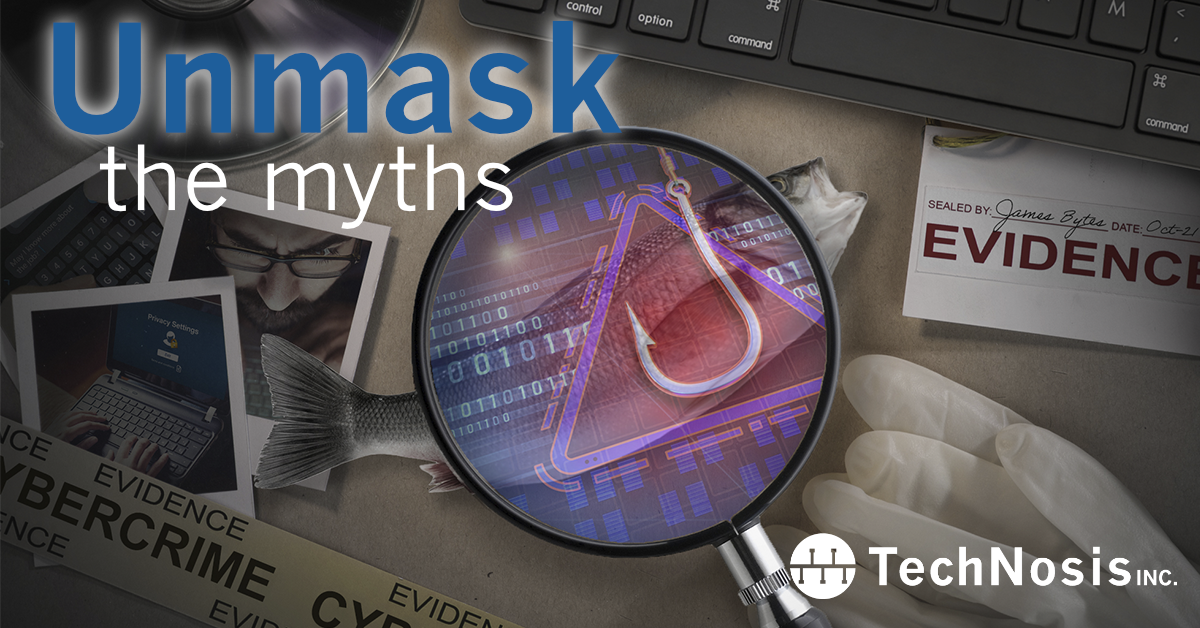Don’t Get Hooked: Understanding and Preventing Phishing Scams
Picture this: You sit down with your morning coffee, ready to start the day when an email from what looks like a trusted partner hits your inbox. It seems legitimate—but hidden inside is a phishing trap set by cybercriminals.
Unfortunately, this scenario is becoming more common for businesses, both big and small.
Phishing scams are evolving every day, becoming more sophisticated and harder to detect. As a decision-maker, it’s vital to understand these threats and clear up common misconceptions in order to protect your business effectively.
The most popular phishing myth
Many people believe phishing scams are easy to identify. They assume that they’ll spot a scam because of poor grammar, suspicious links, or blatant requests for personal information.
But here’s the truth: Modern phishing attacks are much more advanced. Cybercriminals now use tactics like AI to craft emails and websites that look almost identical to real communications from trusted brands or people.
Gone are the days when phishing emails were full of red flags. Today, phishing attempts look legitimate, using logos, branding, and language that mirror the organizations you interact with daily. Even savvy, well-trained employees can be deceived by these sophisticated attacks.
Types of phishing scams
Phishing attacks come in many forms, each targeting different vulnerabilities. Understanding these common types will help keep your business protected:
Email phishing: The most common form, where cybercriminals send emails that appear to come from trusted sources (like banks or known companies). These emails often contain links to fake websites designed to steal sensitive information.
Spear phishing: This more targeted form of phishing focuses on specific individuals or organizations, using personal information to create customized, convincing messages.
Whaling: A type of spear phishing that targets executives or high-profile individuals in your business, seeking to gain access to critical data or financial transactions.
Smishing: Phishing via text message (SMS). Attackers send malicious links or prompt victims to call a number and provide personal details.
Vishing: Phishing over the phone, where attackers pose as legitimate entities, like banks or tech support, to extract sensitive information.
Clone phishing: Attackers replicate a legitimate email, swapping out attachments or links with harmful ones, capitalizing on your trust in the original message.
QR code phishing: Malicious QR codes direct victims to phishing websites, often disguised in everyday places like flyers, posters, or even email attachments.
Protect your business from phishing scams
Defending against phishing requires a proactive approach. Here are some practical steps to secure your business:
• Train your team regularly to recognize and report phishing attempts. Simulated phishing exercises can also be useful.
• Implement advanced email filters to catch and block phishing emails before they hit inboxes.
• Enforce multi-factor authentication (MFA) across all accounts to add a crucial layer of security.
• Keep software and systems up to date with the latest security patches.
• Deploy firewalls, antivirus programs, and intrusion detection systems to protect against unauthorized access.
Collaborate with a trusted partner
Phishing scams are always evolving, and staying ahead of these threats requires constant vigilance and proactive cybersecurity measures.
At TechNosis, we specialize in helping businesses like yours defend against phishing attacks and other cyberthreats. We provide comprehensive cybersecurity strategies tailored to your needs, from training your employees to implementing the latest threat detection tools.
Ready to safeguard your business from phishing attacks? Get in touch with us today, and let’s create a safer digital environment for your organization.

